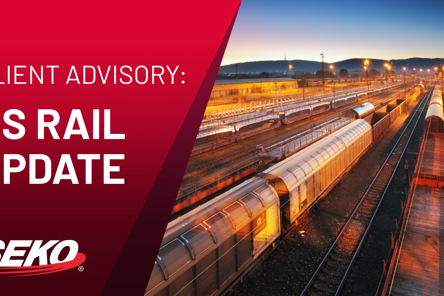What’s happening
The continued impasse between US railroad carriers and their workers’ unions means a potential strike has become a more likely scenario after this Friday, September 16. Under federal law, a strike by unionized railroad workers has been prohibited prior to that date under an enforced Biden administration cooling off period that has been in place for the last 30 days. Negotiations are continuing. Currently, ten of the labor unions have reached tentative agreements with the railroad carriers, however two of the largest unions (The Sheet Metal, Air, Rail and Transportation Workers “SMART” — Transportation Division union that represents conductors, and the Brotherhood of Locomotive Engineers and Trainmen union that represents engineers), representing half of all railroad workers have not yet reached agreements.
The last time there was a railroad strike was in 1992 when the International Association of Machinists union members at CSX went on strike. Then President George H.W. Bush called on Congress to act quickly and signed a return-to-work bill after a two-day strike shut down large parts of the US rail system.
Why it matters
The Association of American Railroads has estimated that the cost to the economy due to a strike would be $2 billion per day. With or without a strike, the impacts one would cause are already being seen across the country as the railroads have started preparing by closing gates to all inbound traffic. Additional impacts we would expect to be felt should a strike occur include:
- Ocean carriers potentially unilaterally changing all inland BOL’s to
local port BOL’s - Worsening port congestion
- Truck power and chassis shortage will be exacerbated
- Increased competition for alternative transportation options
- Surge in pricing for alternative modes of transportation
Impacts may not be limited to the supply chain and movement of freight. The potential negative effect of a strike could be further felt by employees who utilize regional, and national, passenger rail service to commute. Many of these passenger systems depend on freight rail coordination and could face schedule changes or outright service suspensions. Already Amtrak has preemptively announced certain cancellations to address the potential disruptions from a strike.
How to prepare
Waiting until a strike occurs is waiting too long. Now is the time to prepare and establish contingencies to address the ongoing uncertainty, as well as for a strike should one occur. Options do exist but as time moves on, they may become more difficult to utilize. Depending on your needs, and the products being shipped, a few options that can be considered part of a well-rounded strike preparedness plan include:
- Explore the possibility of sending shipments directly from origin via air freight
- Route containers through alternative U.S. ports that are closer to
final destinations - Utilize domestic air to move shipments to distribution centers inland
- Identify partners with transloading capabilities and resources (SEKO has capacity near most USA ports)
The Bottom Line
The best thing to do with uncertainty is to prepare for it. Start planning now to ensure your company is best positioned to react appropriately. SEKO is here to help. If you have questions, please reach out to your SEKO representative, or email us at hello@sekologistics.com.





